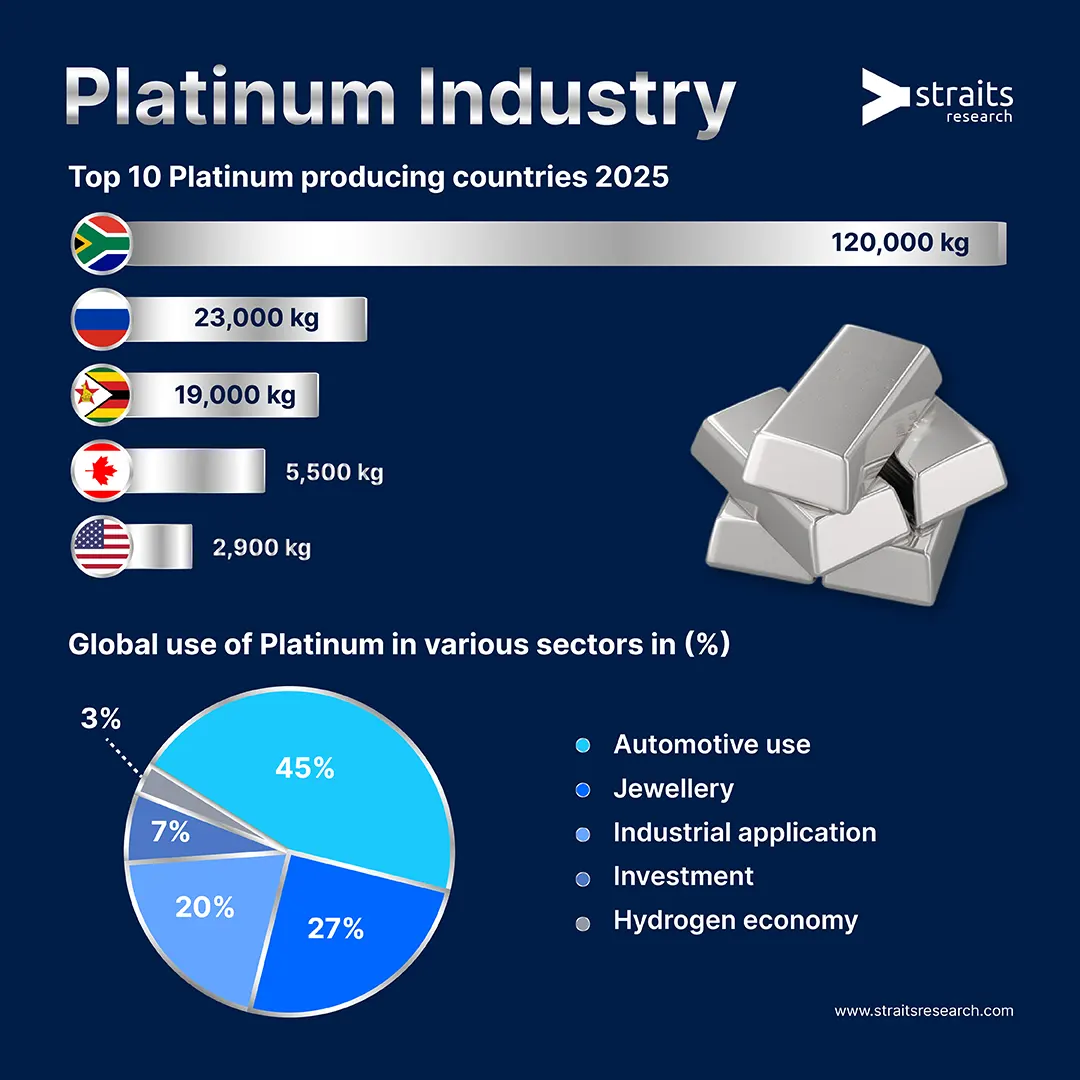Top 5 Platinum Producing Countries in 2025

Platinum is a precious metal that has yet to get its due importance when compared to its counterparts, such as gold and silver. Found in nature in the form of nuggets and grains attached to rocks, it has created a niche for itself by entering into sectors such as the automotive industry and the hydrogen economy. Being one of the rarest metals on Earth, Platinum has reached new heights as it portrays exclusivity and luxury.
Global production of Platinum
Platinum in nature is attached to other minerals known as platinoids, making them inconspicuous for miners to decipher one metal from another. Due to this difficult extraction process, it is one of the rarest metals in the world. Global Platinum production in 2025 was 170 tonnes, showcasing the industrial demand it is trying to fulfil through mining operations globally.
South Africa stood first in terms of Platinum production, with mined volume of this corrosion-resistant metal reaching 120,000 kg in 2025. Famous platinum mines from the country, such as Impala Mine, owned by Impala Platinum, had a production volume of 20,148 kg in 2024. Marikana Mine, another platinum mine in South Africa owned by Sibanye Stillwater, had a platinum mining output of 19,256 kg.
Russia ranked second with platinum mining amounting to 23,000 kg in 2025, with Hong Kong being the top country importing Platinum. Zimbabwe came in third with a total annual production of Platinum amounting to 19,000 kg. Mining contributes to 12% of Zimbabwe’s GDP, with both Gold and Platinum accounting for 50% of revenue brought in through export. Canada came in 4th with platinum production reaching 5,500 kg in 2025, accounting for 5.3% of global platinum production. The United States came in 5th with total platinum production amounting to 2,900 kg.
Sectors which have incorporated Platinum
Platinum is not only used as an investment opportunity, which comprises 7% of the total global platinum usage, but has also penetrated the automotive sector, which takes up a major chunk of the platinum industry usage by 45%.
The automotive industry uses platinum in the form of catalytic converters in order to reduce emissions of harmful gases by converting them into their non-toxic forms. Hydrogen fuel cell electric vehicles, being a relatively new technology, use 3% of the global platinum output in order to convert hydrogen into water for emission. It uses, on average, 30 grams of Platinum per vehicle, amounting to 12,000 ounces annually in 2024.
In terms of investment, Platinum took up 7% of total global platinum usage. Although it is rarer than metal, it is presently not as lucrative an option for investment. Before the global financial crisis in 2008, platinum was more costly than gold. However, over the years, it has been affected by various geopolitical tensions and financial disruptions, with value now being US$979 per ounce as opposed to gold, which is presently US$3,336 per ounce. Between 2019 and 2023, China’s platinum bar demand increased sixfold from 0.87 tonnes to 5 tonnes, while gold bar demand rose from 218 tonnes to 287 tonnes over the same period.
The jewellery sector accounted for 25% of the usage of Platinum globally. China led in the platinum jewellery segment as the total demand for specifically platinum jewellery amounted to 453,000 ounces in 2024. Countries like China and India, which see jewellery as a form of investment, are helping in the growth of this market.
Conclusion
Platinum is a remunerative purchase due to its rarity, but it still has a long way to go in terms of being the primary choice for investment. Mining operations, although hampered by stringent government policies, resume work, resulting in consistent output. Due to its importance in the green energy phenomenon, it is sure to see tremendous growth in the coming years.




